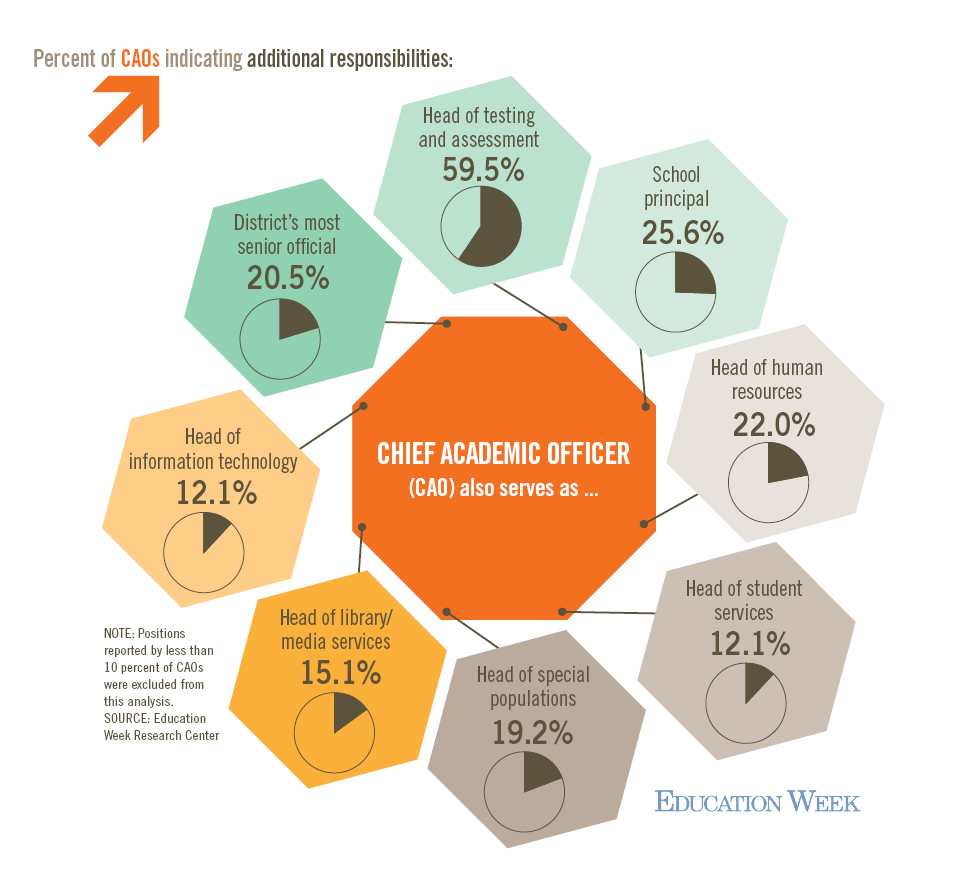CAOs and CTOs: A Profile of Two Critical (and Very Busy) K-12 Decisionmakers

When companies are trying to identify districts’ top decisionmakers for buying and implementing ed-tech, both chief technology officers and chief academic officers probably rank near the top of the list.
In a recently published special report, Education Week looks at the evolving relationships between those two K-12 administrators, and offers portraits of their attempts to collaborate in various districts around the country.
Along with those narratives, the special report also presents data and statistics that shed light on who CTOs and CAOs are, their responsibilities, and the often daunting pressures they face.
Knowing the profile of CTOs and CAOs is almost certainly critical for ed-tech vendors trying to gauge the needs and priorities of K-12 officials–and their expectations for digital tools and systems.
The exact titles of those administrators are often amorphous. CAOs, for instance, can officially be called deputy or assistant superintendents for instruction, or teaching and learning. Some are known as chief innovation officers.
Job titles aside, here’s a breakdown of some of what we know about CTOs and CAOs, and their day-to-day work lives:
Many CAOs juggle a lot of important tasks. Nearly 60 percent of CAOs also lead their districts’ testing and assessment work, according to recent survey by the Education Week Research Center. (See the graphic, below.) Roughly 21 percent, meanwhile, said they’re also their district’s most senior official–presumably the superintendent.
Nineteen percent say they oversee special populations, and 15 percent lead media/library services. Twenty-six percent said they’re also school principals.
Most CAOs directly report to the top boss in the district. Seventy percent of CAOs say they report directly to their district’s top administrator, while smaller numbers said they report to the head of finance (22 percent) and the head of human resources (23 percent), Education Week’s Research Center found.
CAOs supervise many different types of administrators in their districts–particularly principals. Asked about who they directly supervise, the biggest percentage of CAOs, 44 percent, said they oversee principals. Nearly as many, 41 percent, said they oversee heads of special populations, the Education Week Research Center’s data show.
Thirty-two percent, meanwhile, said they supervise the head of information technology, and 26 percent said they’re in charge of the director of testing and assessment.
Many districts, especially smaller ones, lack full-time CTOs. While 83 percent of districts with 10,000 or more students have a full-time individual charged with overseeing technology, smaller school systems often aren’t so lucky. Just 42 percent of districts with enrollments of less than 2,500 have a full-time person tasked with those duties, according to federal data.
Full-time CTOs aren’t as common in rural districts, and certain regions. Perhaps not surprisingly, just 36 percent of rural districts said they have a full-time CTO, according to the National Center for Education Statistics. That contrasts sharply with city and suburban districts, where 79 percent and 67 percent of systems, respectively, say they have full-time individuals focused on ed tech.
As we’ve reported in the past, the smaller the school system, it’s often more likely that the CTO is expected to do a little bit of everything–from big-picture tech planning to working on fix-ups when a teacher’s device melts down or freezes up. A lot of ed-tech advocates say asking CTOs to juggle all of those duties isn’t ideal for districts trying to make sound decisions about costly and important ed-tech purchases.
It’s pretty common for members of the public, and school board members, to complain about the number of administrators on districts’ payrolls, and their salaries.
Those grievances may or may not have merit, but one thing should be clear to ed-tech providers and others working with CAOs and CTOs: A lot of those K-12 officials don’t have the luxury of being focused on just one thing.
See also:
- Implementation Woes Can Doom Ed-Tech Sales to Districts
- Many Districts Go Without a Chief Technology Officer
- Regardless of Their Titles, CAOs Set the Tone for Academics
- CAOs and CTOs Ramp Up on Collaboration
